Orcas, whales, polar bears, icebergs, Northern Lights… YPT’s last Greenland cruise had everything you’d expect from an arctic exploration.
After our amazing first trip to Greenland in 2019, YPT was eager to go back to the biggest island in the world – that we count as a country because we make our own rules. A group of pioneers had the chance to go last September, and they had a perfect cruise. You think we’re exaggerating? Continue reading and you’ll see why.
Join us on one of our cruises to Greenland, Antarctica or Svalbard
9th September: boarding
A five-hour bus journey took us from Reykjavik to Akureyri for departure. After arriving in our cabins and doing some safety demonstrations, we started the cruise with a welcome cocktail, got to know each other in the well-stocked bar, and set sail.
10th September: Orcas spotted!
We woke up a little earlier than planned, at 7.25am. Why so early? Because “several orcas have been spotted near the ship. I repeat, several orcas are swimming around the ship”, we heard on the PA system. Seeing a family of orcas is an extremely rare encounter, so we took it as a good omen for the rest of the trip.
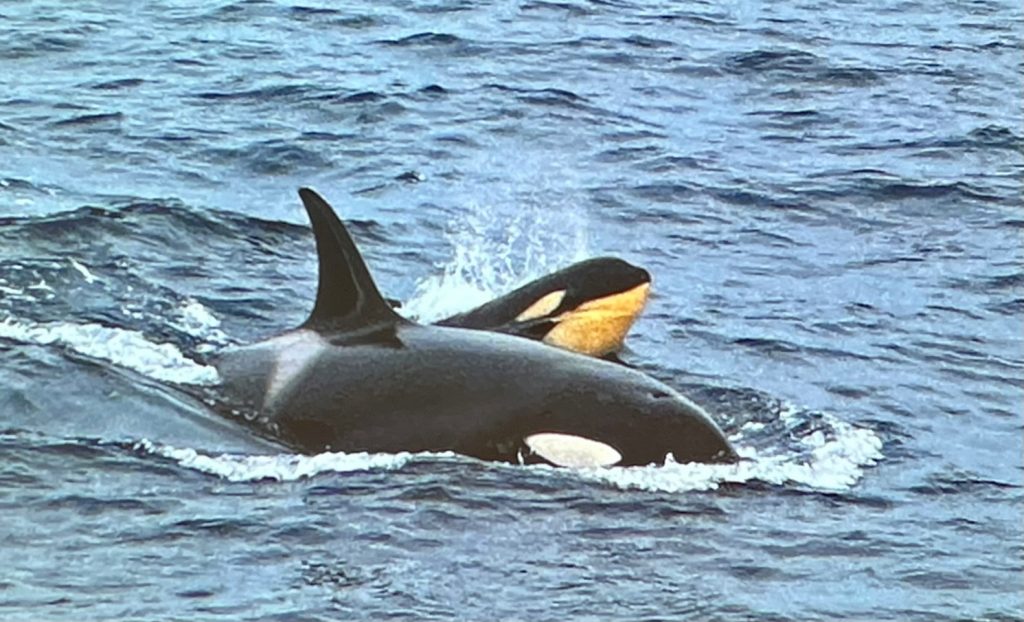
We passed our first iceberg around midday, saw the peaks of Greenland on the horizon around 5pm and entered Scorebund, the world’s largest fjord, at dinnertime. As night fell, the day that had begun with the orcas ended in the most beautiful way; with the curtain of the Northern Lights waving above us. And that was only the first day!
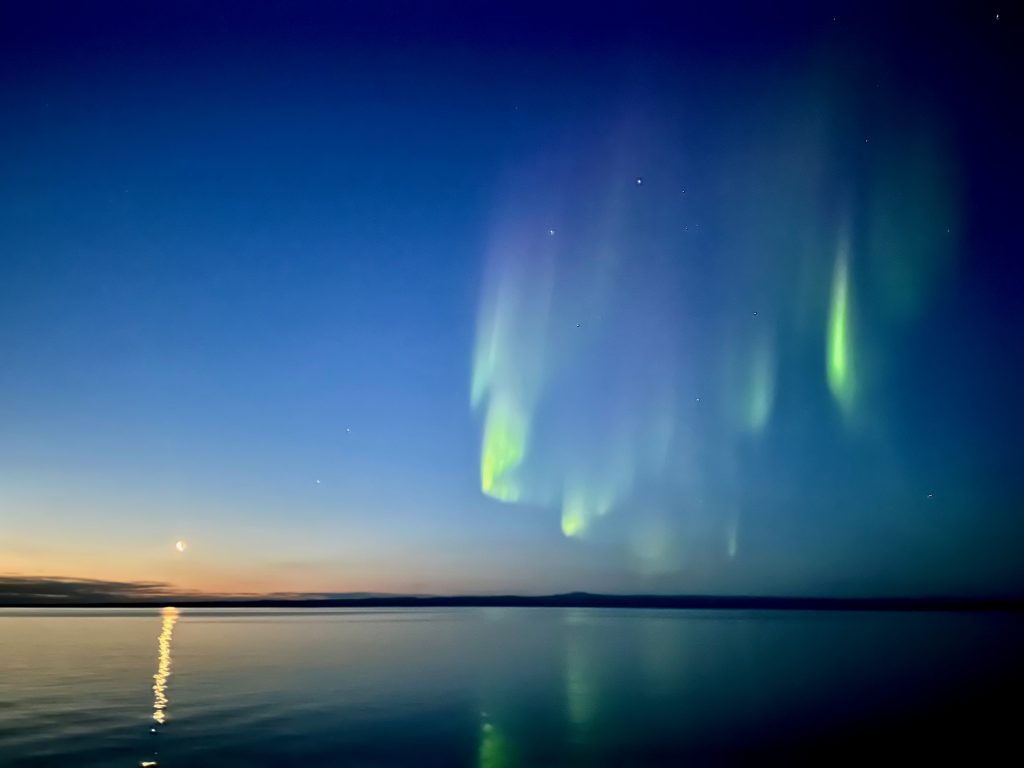
11 September: Vikingebugt and Danmark Ø
For this first morning of exploration, we dropped anchor in Vikingebugt (Viking Bay) where we went for a zodiac ride. It’s famous for its superb basalt columns plunging into the water. You can also get close to icebergs from the glacier that closes off the bay.
After the orcas and the northern lights on the first day, what were only missing one thing to check everything we had on our must-see list. Polar bears. And here they were. Slowly and silently, we approached the coast were two bears where spotted, keeping a safe distance so as not to frighten them (and to be on the safe side, because they run fast, swim fast, and are very hungry at this time of the year).
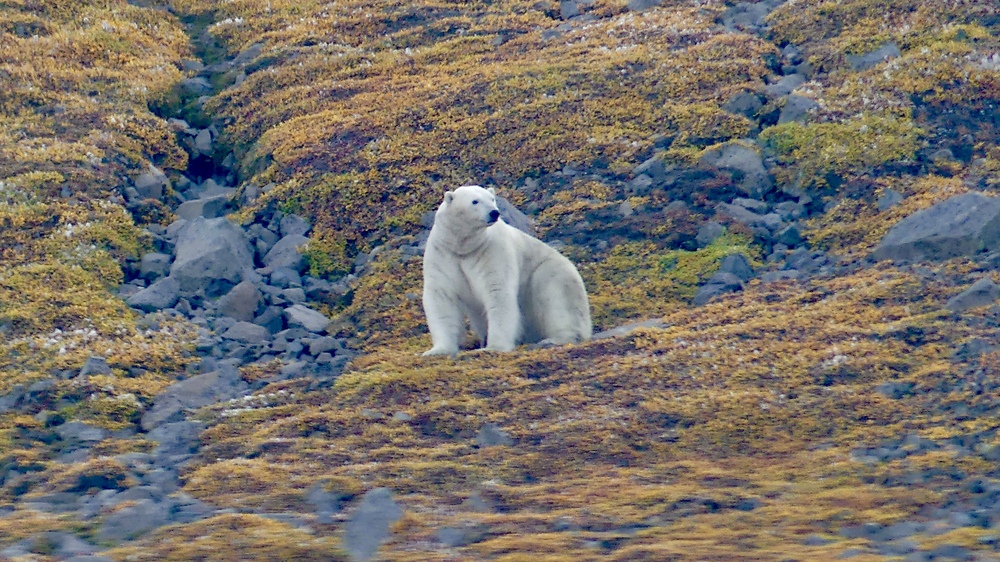
We landed in the afternoon on Denmark Ø, where we could choose between a long, medium or short hike. All three groups marvelled at the beauty and vibrancy of the autumn colours.
After dinner, the northern lights appeared again. They were very faint and seemed to be taunting us – “we’re here, but you’ll have to be patient if you want us to turn into fireworks”. Not tonight, though.
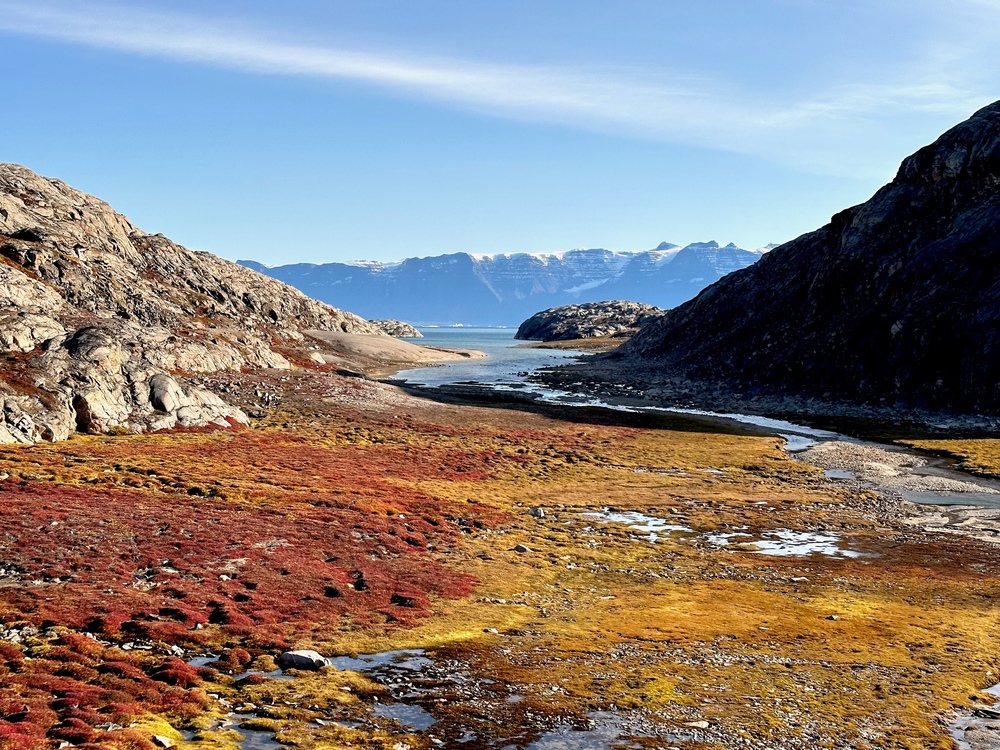
12 September: Rode Ø and Langenaes
Rode Ø is one of the most beautiful places we know. So despite going to bed late because of the Northern Lights, we woke up early for the sunrise.

We started with a zodiac trip through an “iceberg graveyard”, a shallow arm of the fjord where icebergs, carried by the current, run around.
We then set foot on “Red Island”. Unlike other places where we have to walk in groups, flanked by armed guides in case of an unexpected encounter with a bear, the island is easy to secure and we can walk alone within a defined perimeter.
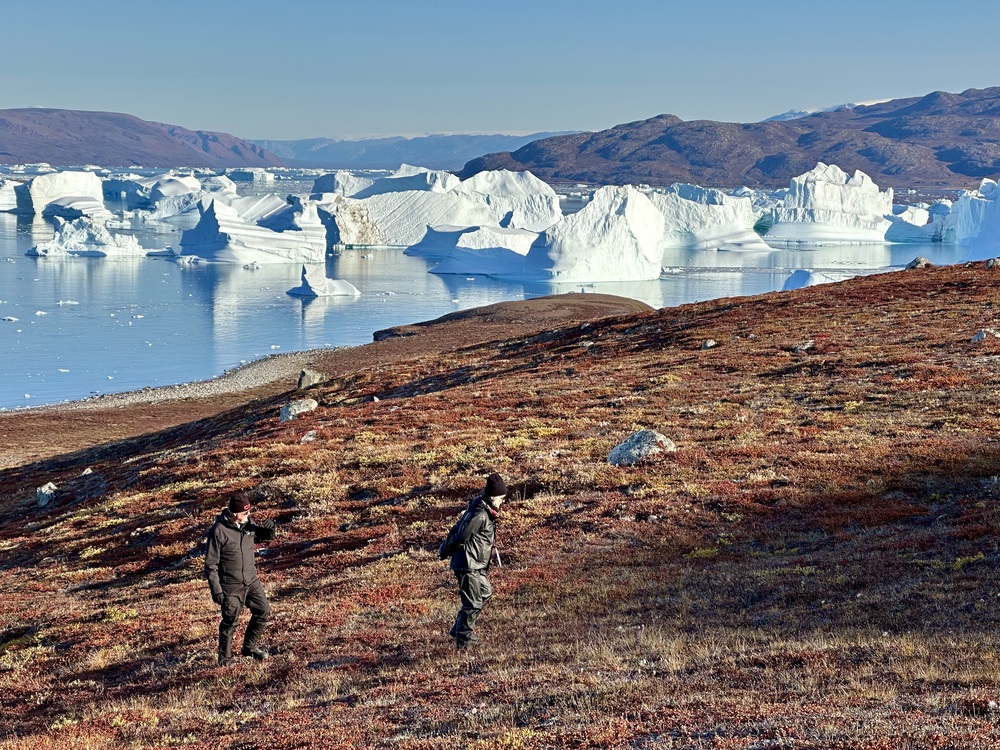
Rode Ø was expected to be the most beautiful place of the trip. And yet, back on the Hondius, our expedition leader, announced that we will now be heading for “the most beautiful view in East Greenland”. Wait, what?
In Langenaes, we climbed to a view-point and were rewarded with a bird’s-eye view of the Rolige Brae glacier, linked directly to the Greenland ice cap. If we climbed up the glacier and walked straight across hundreds of kilometres of ice, we would reach the other side of the island. What a sight! We do expedition cruises, and that’s how this place was discovered the week before: one of our guides spotted the glacier on a map, and wondered if we could have a nice view from the nearby island. Good idea.
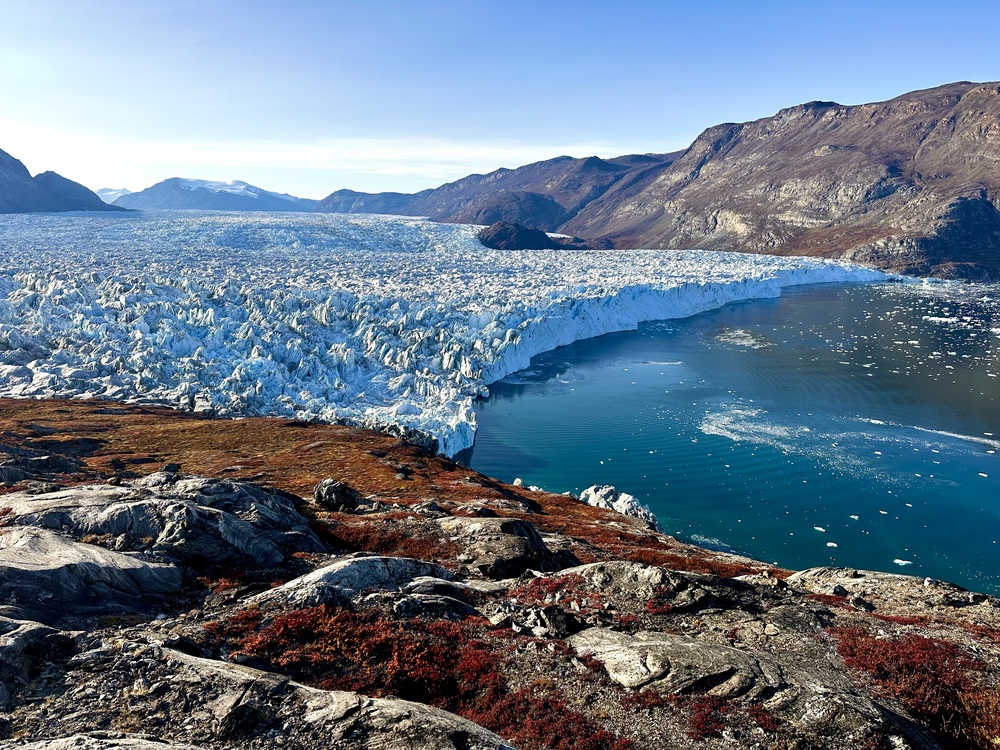
Oh, yeah, we saw Northern lights that night. Again.
13 September: Bjorneoer and Sydkap
We woke up to immaculate skies again today, and started with a walk in Bjørneøer, the bed of an ancient glacier. There was a lovely view of the Grundtvigskirken peak, named after a church in Copenhagen. The morning continued with a zodiac trip among the icebergs, which are particularly large here.
The afternoon took us to Sydkap where we hiked on the tundra. It was a slow walk because we sank into the tundra with each step – like walking on a mattress. Back on the coast, we saw the remains of a dwelling several hundred years old. A family of five lived here all winter, leaving the house as rarely as possible. Which raises the question: why did humans settle here in the first place?
Back on the ship, we had a surprise: the traditional barbecue on deck! We ate, we danced and, just to keep up with our usual routine, we watched the Northern Lights. Four nights in a row!
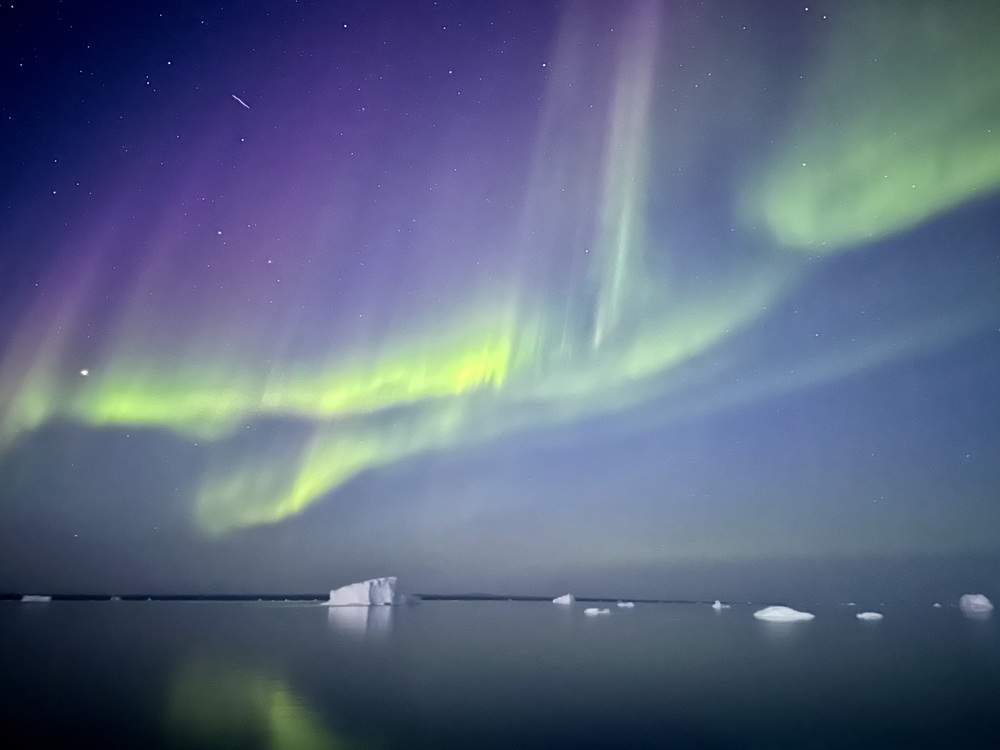
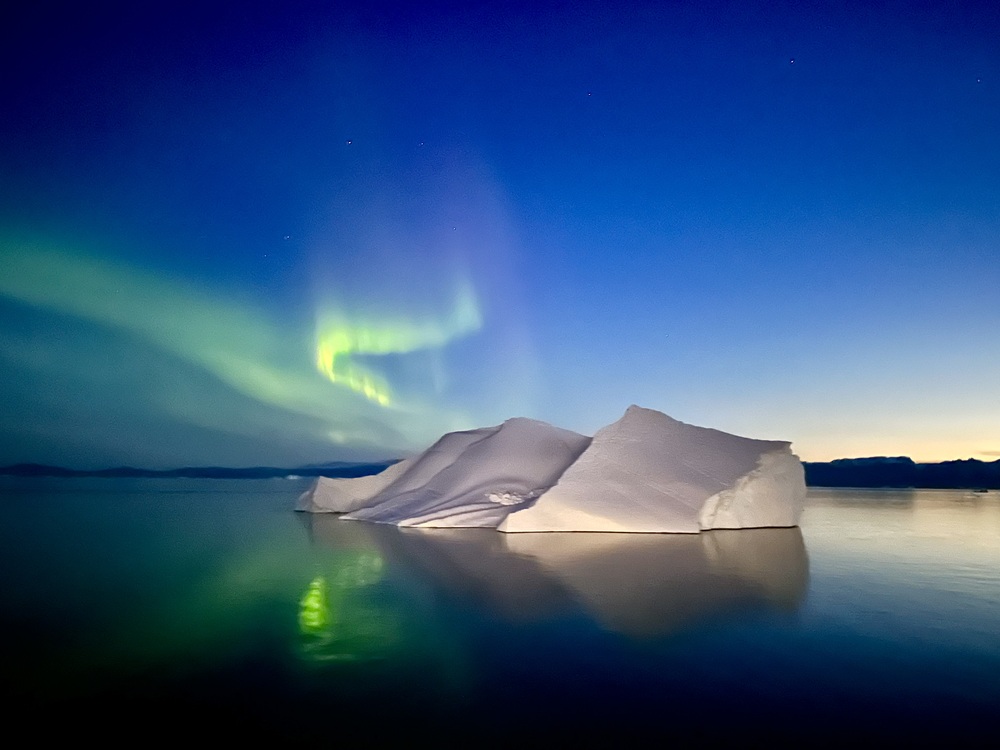
14 September: Ittoqqortoormiit and Nokkedal
Once again, there were no clouds in the sky as we reached Ittoqqortoormiit, the largest village (population 452) in the region. In 2019, we landed here on a Sunday in bad weather and everything was closed. It was rather depressing. This time, the locals were out walking, working, the children were at school… It felt much more like a living community!
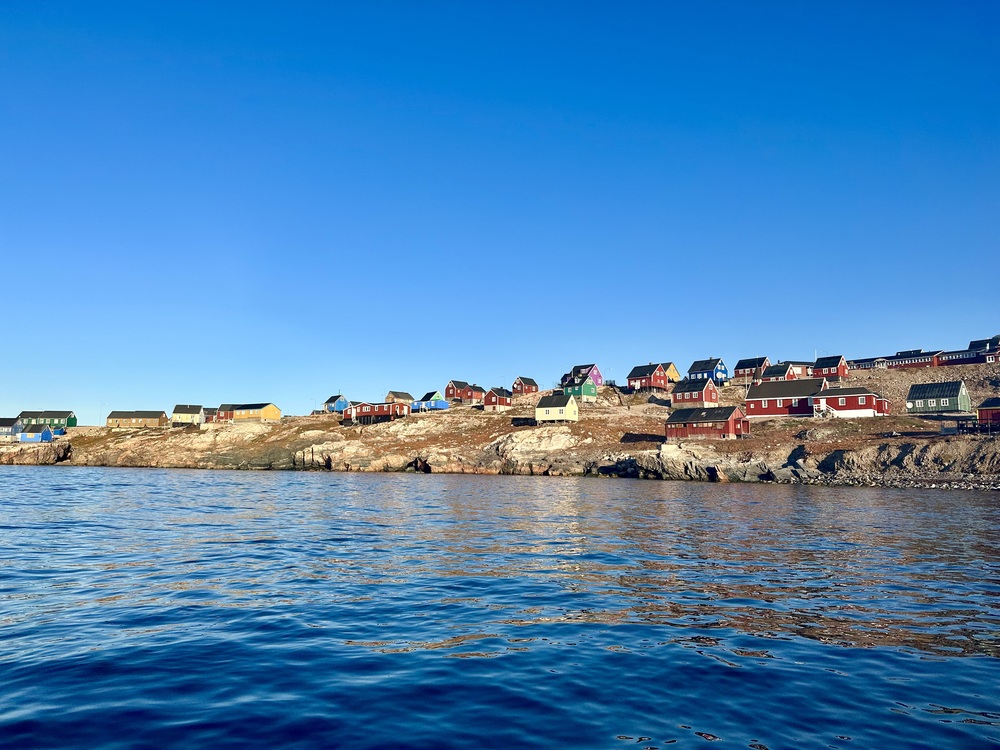
After doing a bit of shopping and sending postcards, we headed back on board and entered the Hurry fjord where we took off for a long walk of around ten kilometres. We were lucky to come across eight Arctic hares and some ptarmigans.
It was with a sigh of relief that we saw the ship being surrounded with fog that night. At least we could go to bed without thinking about the Northern Lights. We heard the next day that the fog lifted around 1am and that they were magnificent. No regrets: you have to sleep sometime.
15 September: Romer Fjord and Turner Sund
The day’s outing was surprising: we stopped in an area of geothermal activity, with springs of water at 57°C. It’s the kind of sight that’s common in Iceland, but that we weren’t expecting to see in Greenland.
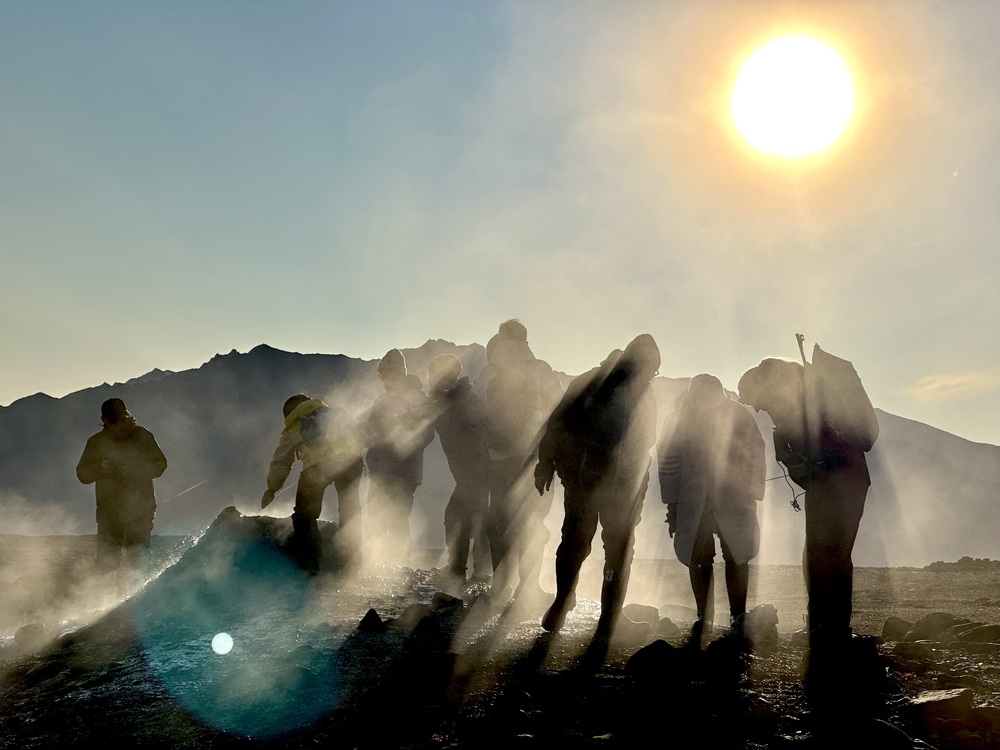
Because of this particularity, the place is very popular with animals (we saw a musk ox and an Arctic hare, as well as numerous eider ducks) but also with hunters.
Then came our last afternoon of activity and it was time for us to experience something typical of the polar regions: the cold! So far we’ve had great weather every day, but the weather changed. We finished off with a zodiac trip in Turner Sund Bay, which was starting to freeze over. This was the last cruise of the season for the Hondius. After taking us back to Akureyri, it was time for the ship to head to Antarctica. But that’s a story for another time!






